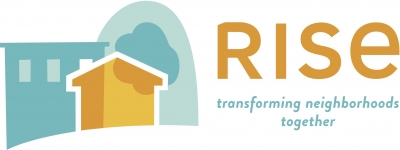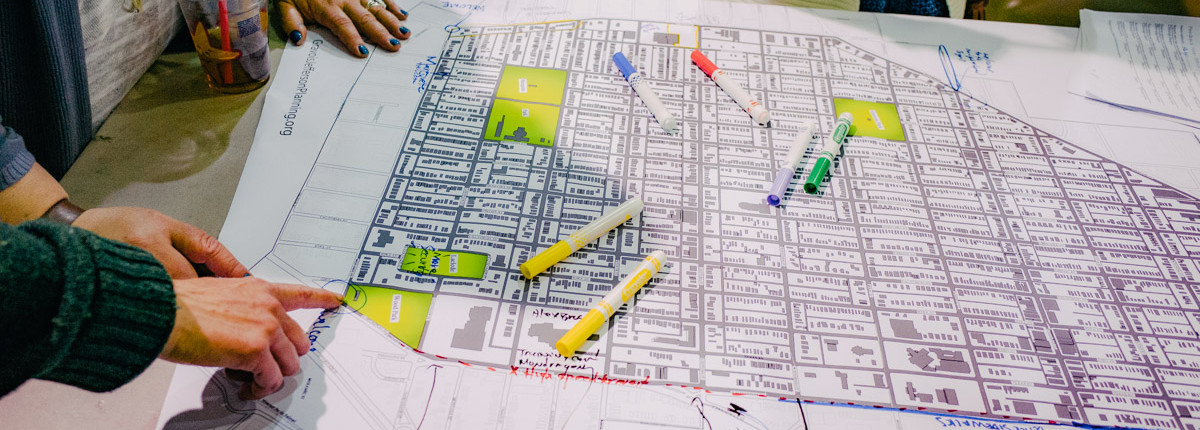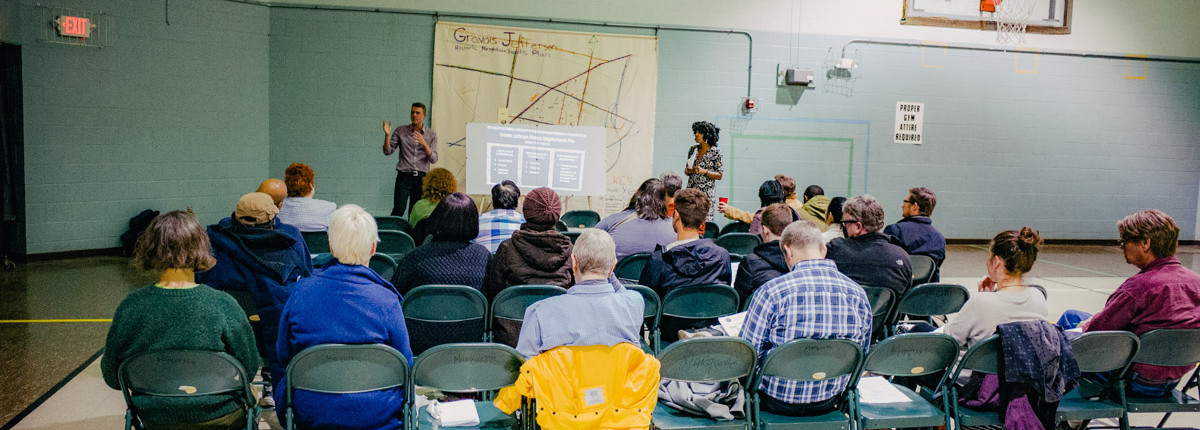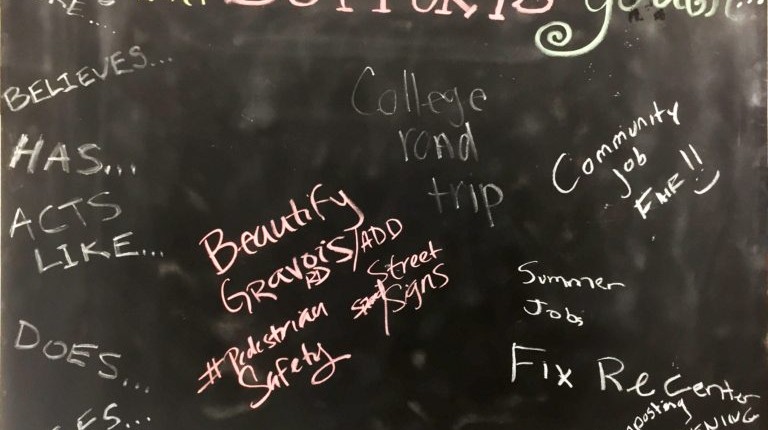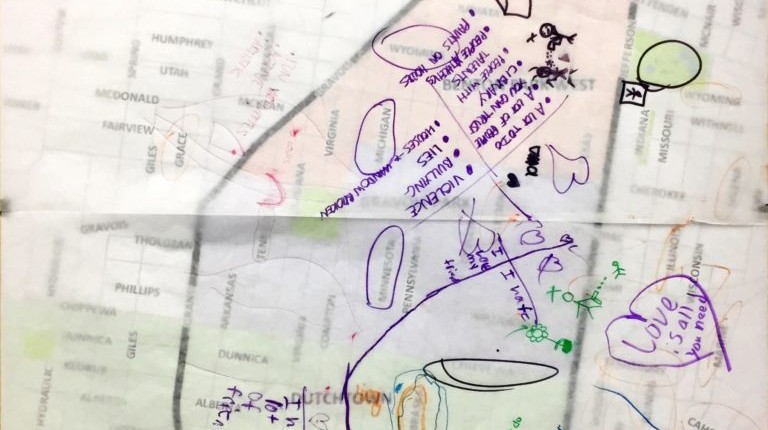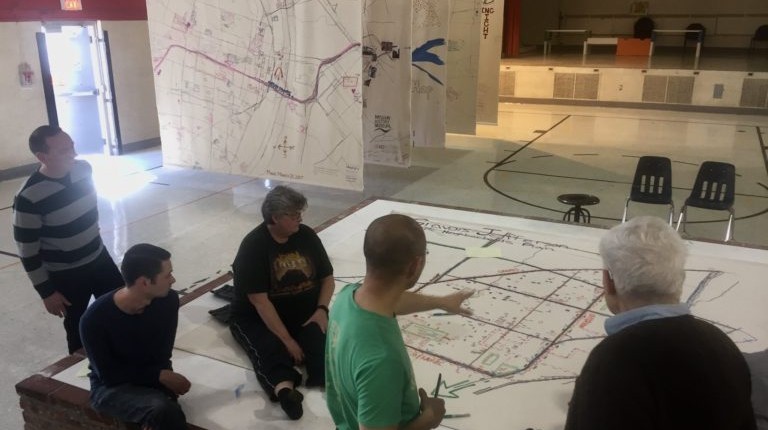“Our vision is for accessible, sustainable, inclusive neighborhoods where families and individuals thrive in a diverse and historically rich, engaged community.”
— Community Vision Statement, Gravois-Jefferson Historic Neighborhoods Plan
Since our public kick-off in November, Rise and Dutchtown South Community Corporation have engaged more than 600 people, gathering 35,000+ pieces of information. We’ve had five large public meetings, seven steering committee meetings, and countless conversations and focus groups. Our website has been visited over 4,000 times, we have hundreds of survey responses, and we’ve distributed thousands of flyers. While we are proud of these numbers, the people behind them are exponentially more important.
We set an intention at the beginning of our process to engage young people – especially those under 18 – in the Gravois-Jefferson Historic Neighborhoods planning process. Conversations with students at Roosevelt and Carnahan High Schools, the youth council at Thomas Dunn Learning Center, the after-school group at Gene Slay’s Girls and Boys Club, and spring break camp kids at Cherokee Rec Center have challenged and inspired us to think differently. From reimagining vacant property to developing maps of their communities, youth have consistently responded with optimism and ingenuity when asked about the future of their neighborhoods. However, many young people have also expressed major challenges they face on a daily basis, most notably; access to jobs, the prevalence of trash, and violence. When asked what types of programs or services they would like to see for young people, the most common responses were summer jobs, summer sports programs, and tutoring programs.
Two working meetings also took place in the last few months. In March, we held two sessions of our second public working meeting around the theme of Housing. Key themes included community ownership of development, preservation of diversity, and the importance of communication and coordination among residents and partners. In May, we held our third and final public working meeting around the theme of “neighborhood”. We engaged the group to imagine they were in the year 2030, drawing their neighborhoods on three scales (large-scale commercial, neighborhood commercial and residential). We heard the need to connect residents with service providers and needed businesses, improve transit and accessibility, and improve the use of space for community benefit.
In addition to this public engagement, we convened a series of resource groups to involve stakeholders in plan development, effectively increasing communication among partners, breaking down silos, building support for strategies, and sparking implementation. They also connect trained practitioners with passionate community members to develop cross-scale relationships and build a platform for sustained change. We look forward to continuing our work with these groups as we develop the final plan and transition to implementation.
As part of the requirements for formal adoption by the City of St. Louis, we recently completed a survey of every parcel in the planning area – over 5,000 buildings and lots! We feel immense gratitude to the many neighbors who came out and volunteered or simply talked with us while we were working. In collaboration with UrbanWerks and Development Strategies, we are analyzing this data and the housing and commercial real estate markets to ensure the recommendations set forth in our plan are grounded in an understanding of current built and market conditions.
We are now entering the final few months of the Gravois-Jefferson planning process. Our team is conducting a final push for survey responses, actively synthesizing the mass of community input we have received, and developing draft plan recommendations. We also met with our steering committee to establish criteria for evaluating draft recommendations. In the coming weeks, we look forward to hosting another round of Resource Group meetings to review draft recommendations, which we will review with the steering committee and other community stakeholders through focus groups and a draft plan meeting. From there, we will develop a final plan to be submitted for adoption by the City of St. Louis. Thanks to all who have been involved for your tireless support and passion.
If you would like to receive updates on our progress, you can visit GravoisJeffersonPlanning.org and provide your email in the contact form. To read our previous post on this effort, click here.
Carrick Reddin, Community Development Coordinator at Rise, is the author of this post and one of the facilitators of the Gravois-Jefferson Historic Neighborhoods Planning Effort.

 The 2017 Rise YP Trivia Night is Coming!
The 2017 Rise YP Trivia Night is Coming! 